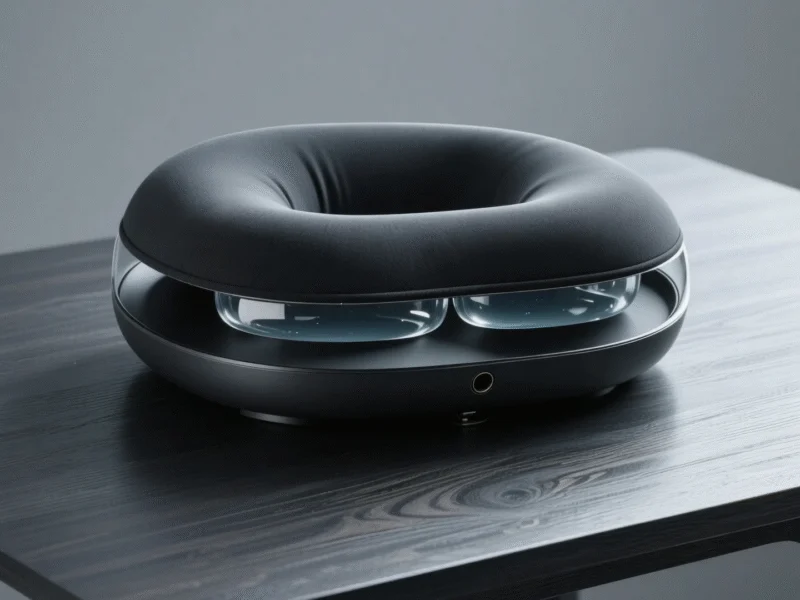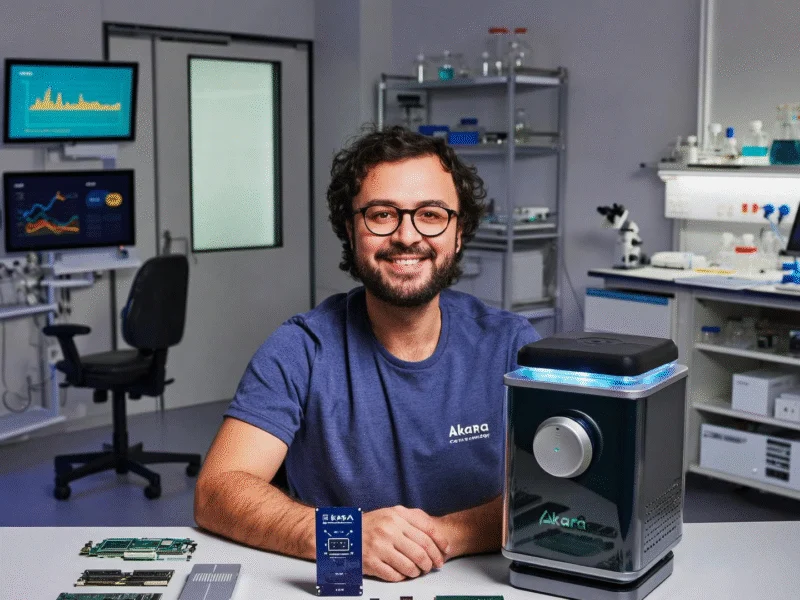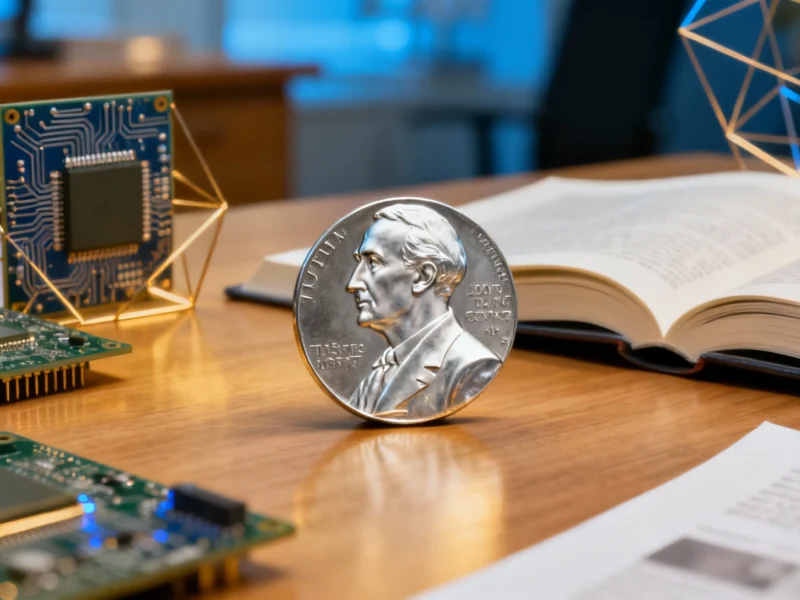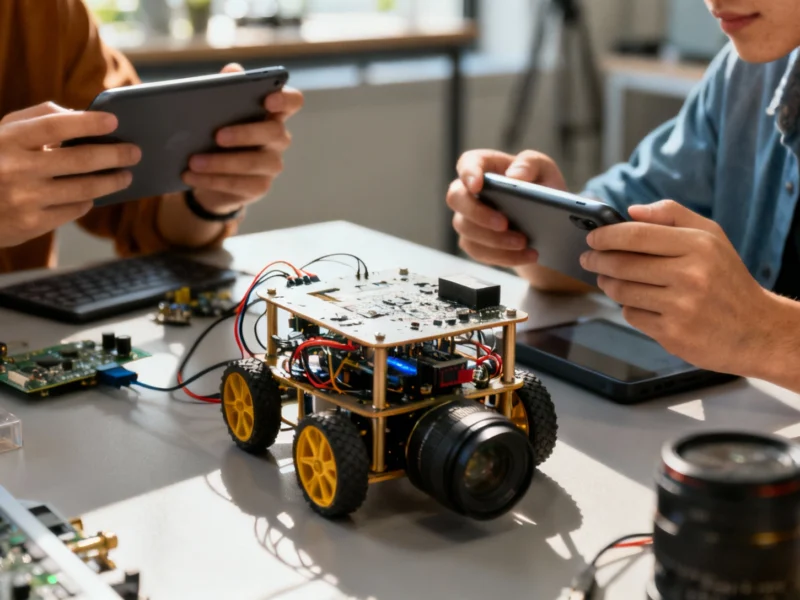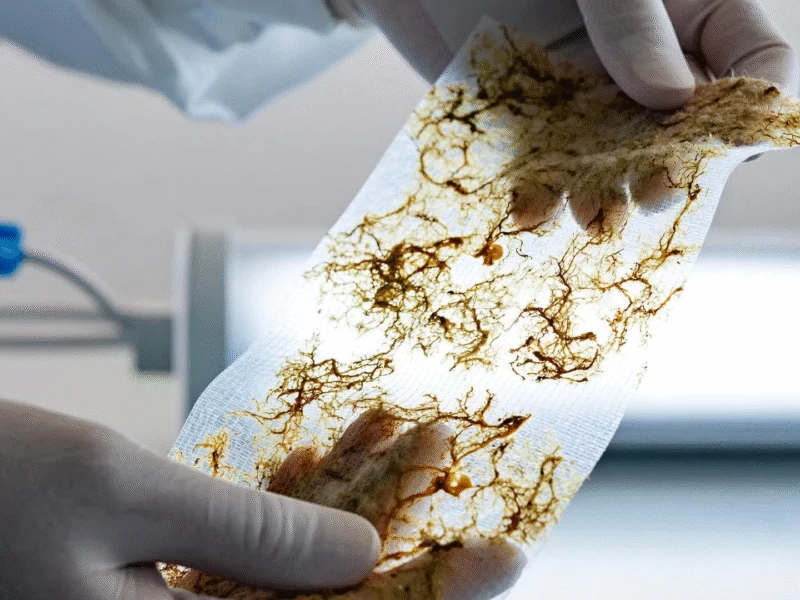In an era dominated by rigid glass screens and plastic interfaces, a revolutionary approach to touch input technology is emerging from academic research. The HydroHaptics system, developed at the University of Bath, represents a fundamental shift in how we physically interact with digital systems, using fluid-based mechanisms to create adaptive, natural-feeling feedback through soft, deformable materials.
HydroHaptics Technology: Fluid-Based Touch Interface Revolutionizing Haptic Feedback
Researchers at the University of Bath have developed HydroHaptics, a groundbreaking technology that enables responsive touch interfaces through fluid-filled chambers. This innovation allows soft materials like cushions and clothing to provide lifelike haptic feedback, creating more natural human-computer interaction.
Akara co-founder: ‘Special’ to be on Time’s best inventions list twice
Akara Co-Founder: ‘Special’ to Earn Second Spot on Time’s Best Inventions List Niamh Donnelly, co-founder and chief technology officer at…
2025 Nobel Prize in Economic Sciences Awarded to Innovation Scholars
Northwestern’s Joel Mokyr and LSE’s Philippe Aghion with Brown’s Peter Howitt received the 2025 Nobel Prize in Economic Sciences for groundbreaking work on innovation-driven growth. Their research explains how technological progress and creative destruction fuel sustainable economic development. The awards highlight the critical role of innovation in preventing economic stagnation.
The 2025 Nobel Prize in Economic Sciences has been awarded to three distinguished scholars for their transformative research on innovation-driven economic growth. Joel Mokyr of Northwestern University, Philippe Aghion of the London School of Economics, and Peter Howitt of Brown University received the prestigious honor for their complementary work explaining how technological advancement and creative destruction sustain long-term economic development.
Groundbreaking Research on Innovation Economics
IEEE Innovation Summit Advances Strategic Technology Initiatives
The IEEE Innovation Summit in Scotland established new frameworks for funding strategic technology initiatives. The event focused on clean technology solutions and AI-driven engineering projects. Over 80 proposals were evaluated for implementation through IEEE’s New Initiatives Committee.
IEEE innovation summit participants have developed new frameworks for funding strategic technology initiatives, with particular focus on clean energy solutions and artificial intelligence applications. The recent gatherings in Scotland brought together engineering leaders to address how IEEE strategic initiatives can accelerate technological development while reducing environmental impact. According to recent analysis, these efforts align with global trends in sustainable technology investment.
Clean Technology Solutions Take Center Stage
Young Innovators Win Major Prizes at Eskom Expo International Science Fair 2025
The 2025 Eskom Expo International Science Fair celebrated exceptional young scientists from multiple countries. Top winners received cash prizes up to R100,000 for innovative projects in mathematics, food preservation, and sustainable agriculture.
Young scientific innovators earned massive recognition and substantial cash prizes at the recently concluded 2025 Eskom Expo International Science Fair, with top winners demonstrating exceptional research capabilities in fields ranging from advanced mathematics to sustainable agriculture. The international competition, organized by Eskom, brought together brilliant young minds from seven countries to showcase groundbreaking projects addressing real-world challenges.
International Recognition for Young Scientists
Bandages Made From Living Fungi Could Be The Future of Wound Healing
Revolutionary Fungal Bandages Emerge as Next-Generation Wound Healing Solution Medical science is entering a new frontier with the development of…
Hybrid Work Isn’t Dead. It’s Being Optimized
The Evolution of Hybrid Work: From Temporary Solution to Strategic Advantage The traditional Monday through Friday 9-to-5 office model has…
Nanoparticle Treatment Reverses Alzheimer’s in Mice
Nanoparticle Breakthrough Reverses Alzheimer’s Symptoms in Animal Models Scientists have achieved a major milestone in neurodegenerative research with a nanoparticle-based…
Interstellar Comet 3I/ATLAS Spraying Water Vapor Far From Sun, Scientists Discover
Astronomers have discovered interstellar comet 3I/ATLAS spewing water vapor at firehose-like rates while surprisingly distant from the Sun. The findings suggest water chemistry for life may be common across star systems, challenging our understanding of comet behavior.
Astronomers have made a startling discovery about our solar system’s interstellar visitor 3I/ATLAS – the object is spraying enormous amounts of water vapor while remarkably far from the Sun, according to recent analysis published in The Astrophysical Journal Letters. The interstellar comet is ejecting water at approximately 88 pounds per second, equivalent to a fire hose running at full blast, despite being about three astronomical units from the Sun where typical comets remain frozen. This unexpected behavior challenges fundamental assumptions about comet activity and suggests the ingredients for life’s chemistry may be widespread throughout the galaxy.
Unprecedented Water Emission Patterns
Extreme H Electric SUV Racing Scientist Says Hydrogen Future Is Orange
Extreme H Racing Series Shifts to Hydrogen Power With Orange Fuel Initiative The motorsport world is witnessing a revolutionary transformation…
